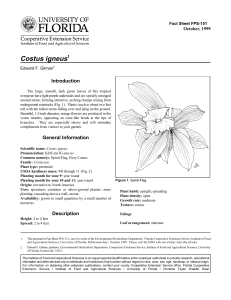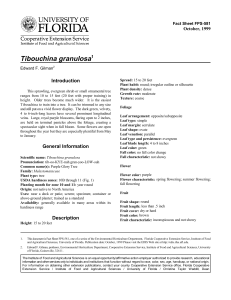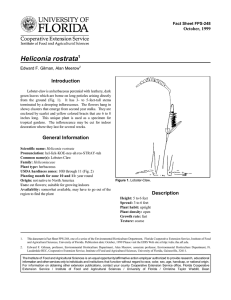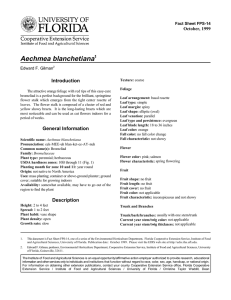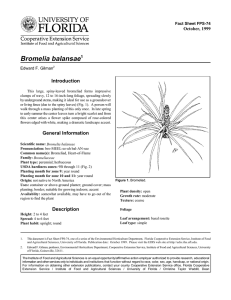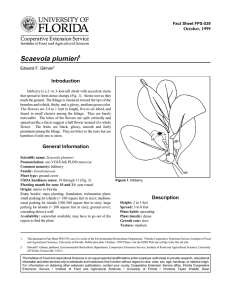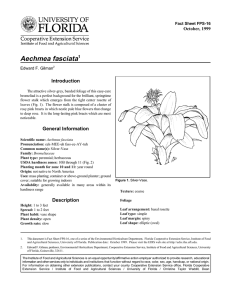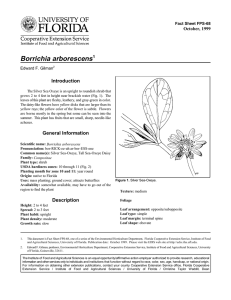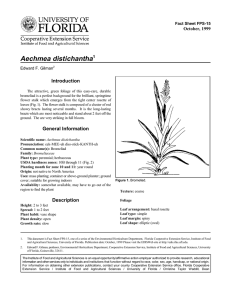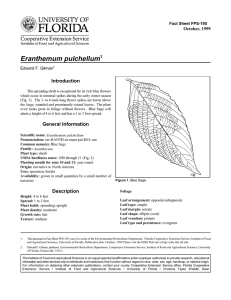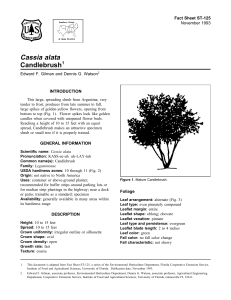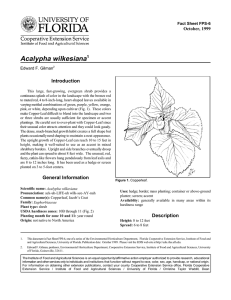Anthurium andraeanum Introduction October, 1999 Fact Sheet FPS-42
advertisement
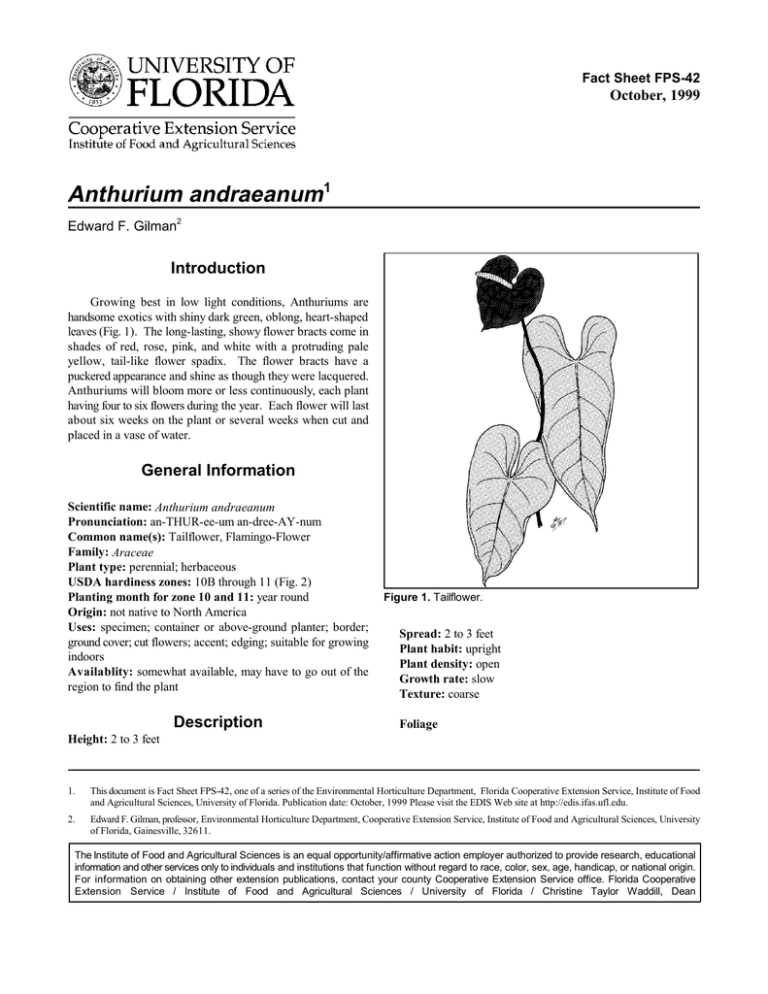
Fact Sheet FPS-42 October, 1999 Anthurium andraeanum1 Edward F. Gilman2 Introduction Growing best in low light conditions, Anthuriums are handsome exotics with shiny dark green, oblong, heart-shaped leaves (Fig. 1). The long-lasting, showy flower bracts come in shades of red, rose, pink, and white with a protruding pale yellow, tail-like flower spadix. The flower bracts have a puckered appearance and shine as though they were lacquered. Anthuriums will bloom more or less continuously, each plant having four to six flowers during the year. Each flower will last about six weeks on the plant or several weeks when cut and placed in a vase of water. General Information Scientific name: Anthurium andraeanum Pronunciation: an-THUR-ee-um an-dree-AY-num Common name(s): Tailflower, Flamingo-Flower Family: Araceae Plant type: perennial; herbaceous USDA hardiness zones: 10B through 11 (Fig. 2) Planting month for zone 10 and 11: year round Origin: not native to North America Uses: specimen; container or above-ground planter; border; ground cover; cut flowers; accent; edging; suitable for growing indoors Availablity: somewhat available, may have to go out of the region to find the plant Description Figure 1. Tailflower. Spread: 2 to 3 feet Plant habit: upright Plant density: open Growth rate: slow Texture: coarse Foliage Height: 2 to 3 feet 1. This document is Fact Sheet FPS-42, one of a series of the Environmental Horticulture Department, Florida Cooperative Extension Service, Institute of Food and Agricultural Sciences, University of Florida. Publication date: October, 1999 Please visit the EDIS Web site at http://edis.ifas.ufl.edu. 2. Edward F. Gilman, professor, Environmental Horticulture Department, Cooperative Extension Service, Institute of Food and Agricultural Sciences, University of Florida, Gainesville, 32611. The Institute of Food and Agricultural Sciences is an equal opportunity/affirmative action employer authorized to provide research, educational information and other services only to individuals and institutions that function without regard to race, color, sex, age, handicap, or national origin. For information on obtaining other extension publications, contact your county Cooperative Extension Service office. Florida Cooperative Extension Service / Institute of Food and Agricultural Sciences / University of Florida / Christine Taylor Waddill, Dean Anthurium andraeanum -- Tailflower Page 2 Figure 2. Shaded area represents potential planting range. Leaf arrangement: alternate Leaf type: simple Leaf margin: revolute Leaf shape: saggitate (arrow) Leaf venation: brachidodrome; pinnate Leaf type and persistence: evergreen Leaf blade length: 8 to 12 inches Leaf color: green Fall color: no fall color change Fall characteristic: not showy Flower Flower color: pink; white; salmon Flower characteristic: year-round flowering Fruit Fruit shape: elongated Fruit length: unknown Fruit cover: fleshy Fruit color: red Fruit characteristic: inconspicuous and not showy Trunk/bark/branches: usually with one stem/trunk Current year stem/twig color: not applicable Current year stem/twig thickness: not applicable Culture Light requirement: plant grows in the shade Soil tolerances: sand; acidic; loam Drought tolerance: moderate Soil salt tolerances: poor Plant spacing: 18 to 24 inches Other Roots: usually not a problem Winter interest: no special winter interest Outstanding plant: plant has outstanding ornamental features and could be planted more Invasive potential: not known to be invasive Pest resistance: long-term health usually not affected by pests Trunk and Branches October 1999 Anthurium andraeanum -- Tailflower Page 3 Use and Management Soils should be moist and high in organic matter, and relative humidity should remain high. Anthurium leaves lose their shiny texture and may die if humidity drops below 50 percent for more than a few days. For interior use, keep potted plants on trays of moist gravel or spray several times per day with water and protect from drafts. Single plants are best used in small gardens. In larger landscapes, a mass of many plants together looks best. Plant two to three feet apart to form a dense foliage effect. Propagation is by division. Mites, scales, mealy-bugs, and nematodes can be a problem. Pests and Diseases No diseases are of major concern. October 1999
